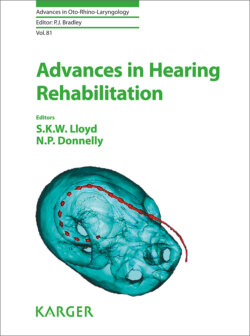Читать книгу Advances in Hearing Rehabilitation - Группа авторов - Страница 11
На сайте Литреса книга снята с продажи.
Introduction
ОглавлениеThere are many anatomical and pathological aspects of the ear that are not well imaged by currently accessible technologies. While the resolutions of CT and MRI have improved steadily over time [1], these technologies still lack the resolution to clearly define middle ear or inner ear pathologies in sufficient detail to make precise clinical diagnoses or decisions, despite the impressive imaging available. Other drawbacks of current technologies are the exposure to ionizing radiation from CT imaging, and the artifacts and movement created in both CT and MRI from metallic or magnetic implants. Many structures in the middle and inner ears that are clinically important are in the millimeter and sub-millimeter ranges, and are not well delineated by CT and MRI. Examples include necrosis of the tip of the incus, loosening of a stapedotomy piston or other ossiculoplasty prosthesis from the ossicle it is coupled to, granular changes in the tympanic membrane and very small residual or recurrent cholesteatoma in the middle ear. In addition, current imaging modalities offer no information on the dynamic properties of otologic structures, either to static pressure changes or mechanical deformations, nor do they allow us to explore the vibration responses of the ear in response to acoustic stimulation.
Fig. 1. Coronal MDCT (a), coronal CBCT (b): fractures of the malleus handle (white arrows) in the right ear diagnosed with MDCT scan (a) and with CBCT (b). This type of fracture is much easier to be visualized on a high resolution CBCT than on an MDCT scan.
This chapter presents some of the promising new imaging technologies that may address the limitations of current imaging.
